Sound:
[responsivevoice_button]
I start every sound section of a cable review with this: I know it’s a hot topic, and I know there have been countless discussions on and offline about it. Do cables matter? Do they make a difference?
I’m not trying to start a heated argument here again. If you don’t hear any differences with cables that’s cool! There is nothing wrong with that. Enjoy your tunes and don’t spend a single dime on a cable. I for one do hear changes when switching cables. Are these night and day differences? Definitely not. Don’t expect your cable to turn your monitors into whole different products. A cable is here to squeeze out the last bits of performance. If you’re not happy with your monitor, get a different monitor, but don’t think a cable will help you.
Now that we have that out of our system, let’s get on with why you’re here for. The sound performance of Horus X. I usually start out with hooking up my custom Katana to new cables. The reason being that Katana is the most cable responsive CIEM in my collection. It shows me the strengths and weaknesses of any new variable in the chain. From there on I explore into different monitors to draw a general conclusion.
The Horus X has an overall balanced signature but with a slight tilt towards the upper registers. It creates a very dark background and a wide and deep stage. It brings out details with ease and presents the listener a higher resolution picture. Its biggest draw-back for me is a somewhat dryer top-end, that could use a dose more glow.
Horus X has good extension into lows, where I hear monitors reaching deeper than they do with their stock cables. The X does not put any more amplitude into bass to me. It goes for a neutral low-end, but enhances layering and texture. If anything, Horus X keeps bass a bit tighter and snappier. To me it seems that there is better speed and agility. It gives higher resolution across all frequencies.
The mids on the Horus X come across as smooth but with great transparency. I don’t hear a lot of coloring here towards a warmer sound, but notes seem a touch fuller to me. What I really like about the Horus X is how it handles vocals. They sound a bit lusher and more emotional to me. The X makes them sound more seductive if you will. Instruments sound more precise and organic. Horus X puts every musician on a clean and dark background.
The separation is something worth noting here to me. With Horus X I can pin-point instruments very easily. It places each musician clearly and gives them perfect light. The sound stage gets stretched into all directions, but mostly the width is noticeable here. Horus X enhances the stereo image and gives me very good imaging and layering. One of Horus X’s key strengths to me is its control. It renders a very finely nuanced picture and keeps its structure at all times. It makes my monitors more stable in keeping everything organized.
In its top-end, Horus X produces a clear sound. Treble does get extra energy and a brighter shimmer. I don’t think it’s a problem, unless the monitor you want to pair it with is on the edge of sibilance already. But even my JH Audio Layla did stay clear of harshness, which gets pushed over the top with the wrong cable. The Horus X does produce a rather dry high end region, which some might not be too fond of.
Recommended Pairings:
64 Audio: N8, A18t, Fourté Noir; Empire Ears: Phantom, Legend X, Wraith; JH Audio: Layla, Lola; AAW: Canary; Audeze: LCD-i4; qdc: Anole VX;
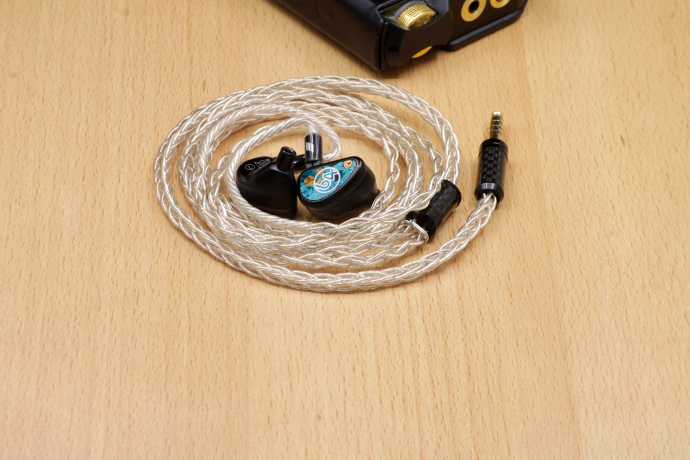
Effect Audio Horus X with 64 Audio Fourté Noir
Comparisons:
The Horus X comes in at a price of 2,499 USD, which is more than any other cable I have direct access to. I know many people want to know how the Horus X compares to the Horus Octa or the original Horus. Unfortunately I don’t have either one here. I had the Horus back in early 2016 for two or three months but I returned it to Lieven. As I don’t do comparisons based on memory, I won’t get into it here.
I have a couple of competing cables at my disposal and hope this section gives you a better overview of the Horus X’s performance.
Mentioned prices are in USD and correct at the time of writing.
Effect Audio – Leonidas II Octa (1,888$)
The Leonidas II Octa is the eight-wire variant of EA’s Palladium-plated silver cable. As both cables come from the same hands, they of course share the same build quality. My Leonidas II has a tighter braiding however, and somehow the it feels heavier on the ears when worn. The Horus X to me is a bit comfier.
In terms of sonic differences, the Leonidas II Octa gives me a smoother, warmer and fuller sound compared to the Horus X. The X gives me a more detailed view at music. It sounds a bit cleaner to me, while the Leonidas II Octa also produces very detailed information, it does not reach the level of the Horus X.
The Horus X has a lightly brighter sound in comparison. It sounds a touch dryer to me as well. The X does perform on a higher level when it comes to technical performance. It creates a more spacious stage and gives a more holographic appearance. The Horus X layers better and has higher imaging abilities. It places instruments even cleaner than the Leonidas II Octa.
The Leonidas II Octa has a calmer and softer top section, here the Horus X produces a sharper and brighter sound. The Leo II Octa is less fatiguing in that regard, as it keeps treble at a safer distance. The Horus X does create a wider extension into treble and produces more air.
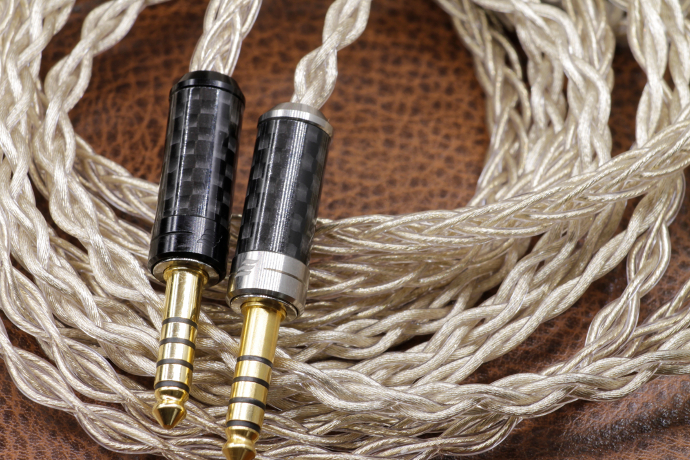
Effect Audio Horus X and Code 51
Effect Audio – Code 51 (2,388$)
Effect Audio just released the Code 51 a couple of months back. It’s their four-wire flagship cable that comes in 24 AWG size. The Code 51 uses a very different wire configuration with gold-plated silver, palladium-plated silver and a silver-gold alloy. The Code 51 is one of my absolute favorite cables for monitors like the Legend X or Fourté Noir. It really brings out the very best of them.
Compared to the Horus X, the Code 51 creates a stage that is noticeably more holographic. It creates a bass that has more authority than the Horus X’s. The Horus X is more balanced here, it goes for a softer and smoother route. The Code 51 on the other hand goes for control and texture. There’s something in it, that just is very hard to describe.
With the Code 51 I get smoother and fuller mids, while they sound a bit more transparent on the Horus X. Vocals are a sweeter with the Horus X to me compared to the extremely precise Code 51. The Code 51 has a slightly warmer sound than the Horus X to me.
In terms of technical performance I think the Horus X and Code 51 go head-to-head. The Code 51 creates a more holographic stage, but the Horus X does stretch a tiny bit wider to me. But in resolution, layering and separation these two are very competent and perform at their best. Personally, I can’t tell if one is better here than the other.
Treble is a bit smoother and softer on the Code 51 to me. The Horus X produces a brighter light and sharpens highs more noticeable. The Code 51 doesn’t do that to my ears. It keeps things more civilized and safe.
Eletech – Iliad (1,799$)
Like the Code 51, the Iliad is a 24 AWG sized four-wire cable. It uses palladium-plated silver, pure silver and silver-gold alloy. In terms of ergonomic comfort, I think these are pretty much at the same level.
On a sound point of view the Horus X has a smoother low end, while the Iliad does have a higher resolved bass section. The Horus X sounds a bit tighter and faster in the lows than the Iliad. The Iliad gives a more organic presentation overall though. It sounds a touch fuller and weightier.
In the mids, Horus X sounds more transparent and neutral, while the Iliad has a more open sound. The Iliad gives a more holographic experience, where it portrays musicians in front of you. The Horus X on the other hand keeps them a bit closer to you, but creates a wider stage. Both cables are excellent performers when it comes to resolution and imaging. They tickle out the finest beeps with very high precision.
The Iliad is a cable that is a little harder on treble. It pushes highs over the edge easier than the Horus X. Monitors like my Layla get very hard edged and I personally can’t listen to it with the Iliad. The Horus X still stays in the clear, although it also sharpens highs, but not to an extend as the Iliad. The Horus X however sounds a bit dryer in its top end than the Iliad.

Effect Audio Horus X and its competition
PW Audio – 1960s 4w (1,999$)
PW Audio’s 1960s is one of the very few pure copper cables in the high end segment. It uses a coaxial design, and therefore the four-wired version comes with a total of eight conductors. In terms of build the Horus X is miles ahead. I am repeating myself here, but heat-shrink has absolutely no place in a cable of that price. Comfort-wise I also prefer the Horus X over the 1960s.
Overall I think the 1960s and Horus X do share similarities. Both cables create very high levels of details and information. The PW Audio cable however has a sharper sound, it is more analytical to me than the Horus X. The X has a fuller presentation.
The Horus X to me seems a touch smoother and more organic in the lowest registers. Both cables reach similarly deep and I personally could not tell if one goes lower than the other. The Horus X keeps a tighter low-end to my ears and sounds a bit snappier compared to the 1960s.
Mids sound a bit colder on the 1960s than on the Horus X, which gives vocals a more analytical sound. The Horus X keeps them richer and more engaging to me. Horus X keeps instruments fuller and lusher in comparison to the PW Audio cable.
The 1960s edges the Horus X out in terms of layering and stage depth to me. The Horus X on the other hand goes further into width and has better imaging to me. One thing where the Horus X also comes out on top to me, is precision and pin-pointing. It really renders finer nuances better with a cleaner cut. Although the 1960s is absolutely no slouch in that regard either.
In treble I think these two share similarities again. Both create a brighter illuminated top-end and could do with a dose more softness for my taste. In direct comparison I find the 1960s to be even a tad sharper though.
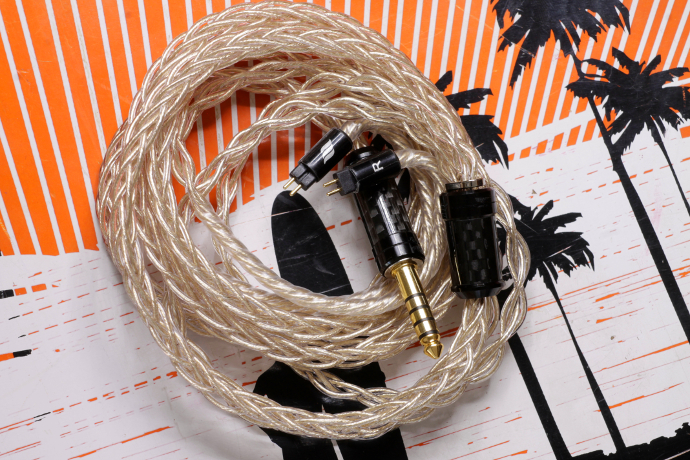
Effect Audio Horus X
Conclusion:
Back in the day when I borrowed Lieven’s Horus, I was a huge fan and it was hard for me to let it go. It has kept a strong place in my audio infected mind. For a very long time it was the best cable that I heard. Many moons have passed since then, and the desire to get it has gone down. Now in April of 2020 I am sitting at home with my own Horus X typing these lines and reflecting on the performance of it.
The Horus X definitely is a very strong cable and one that offers a whole lot. I absolutely adore the way it makes vocals sound on my C/IEMs. It renders at a very high rate and puts everything on a pitch black background, while keeping structure and control. For monitors like the A18t it is absolutely gorgeous.
The massive elephant in the room of course is its price. At 2,499$ it is nowhere near cheap. Heck, most people would have to save up for a long time before they could afford one. For that price you can get extremely good flagship-status IEMs already. At this level one thing always has to be mentioned, and that’s diminishing returns. With cables this is something painfully obvious though.
I mentioned it earlier in this article. Do not buy a cable and expect your monitors to sound completely different. The Horus X also won’t do that. If you want a cable that brings out the last percents of performance, and you have the money to spare, give the Horus X a good listen. It represents one of the finest sounds you can ask for in a cable.





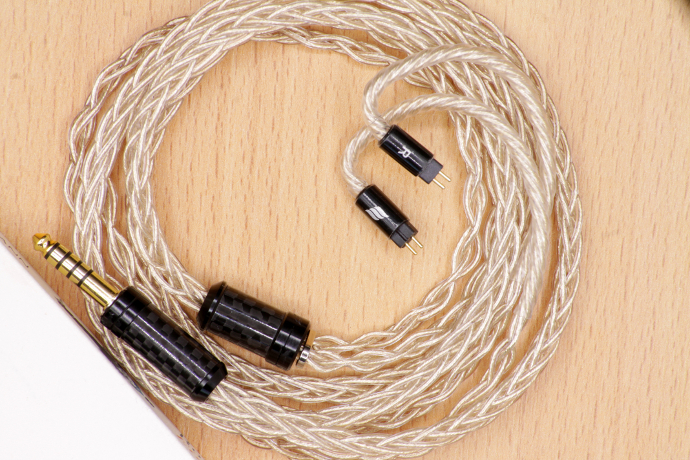
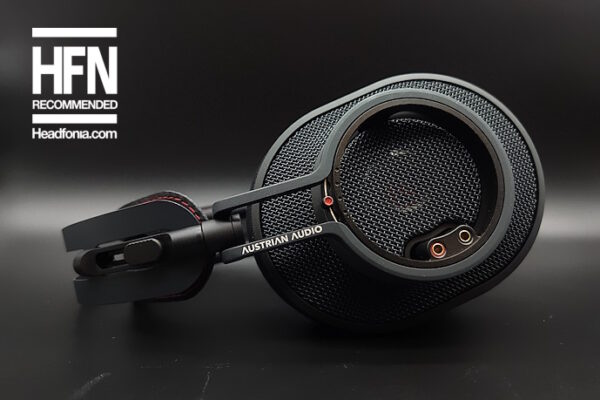

Chris
Great review, enjoyed it much.
My Grado’s make me sleep good at night. No need for expensive cable’s and to worry about 2.4k cable’s on an already expensive headphone. Keeping my life easy.
The horus X looks killer though.
Linus
Hi Chris,
thanks for the comment.
That’s a very good example you’re setting here. You don’t need a cable if you’re already happy with your IEM/headphone.
I’m glad you are enjoying your Grado’s. That’s what it is all about. Enjoy your music and your gear.
Cheers!
David
Hey Linus, thank you for the review.
Is there any chance for you to compare Horus X to Horus octa?
cheers